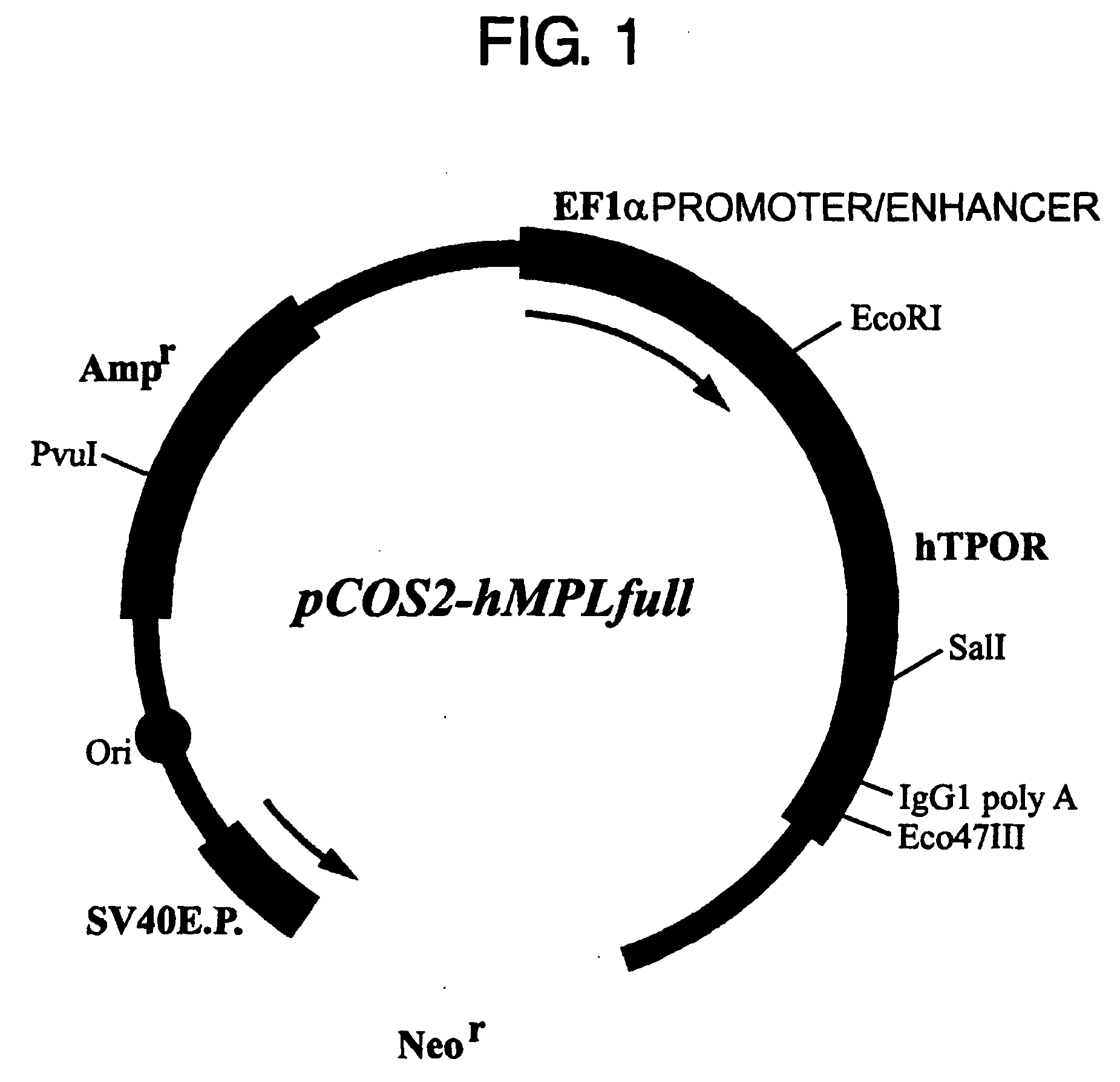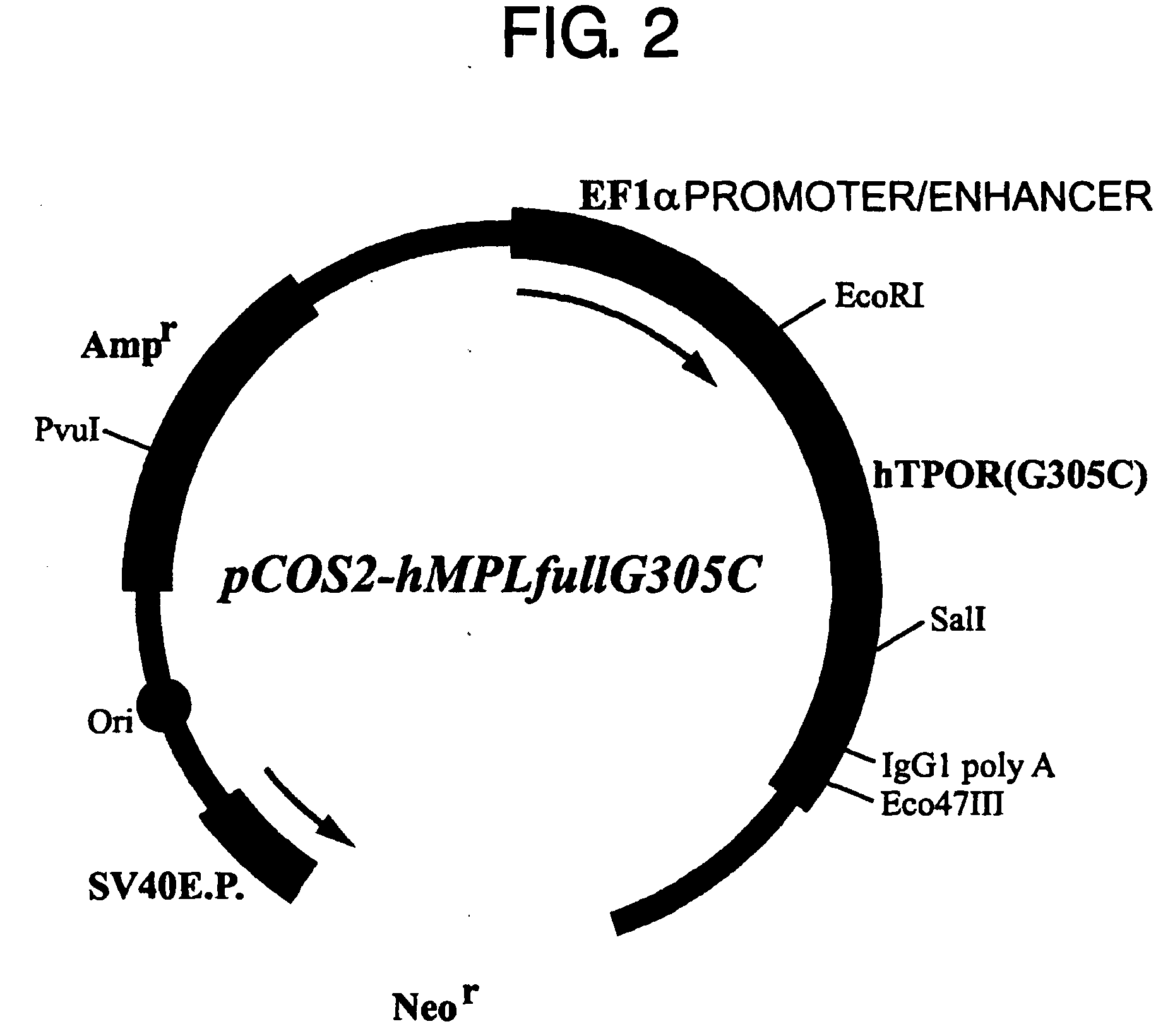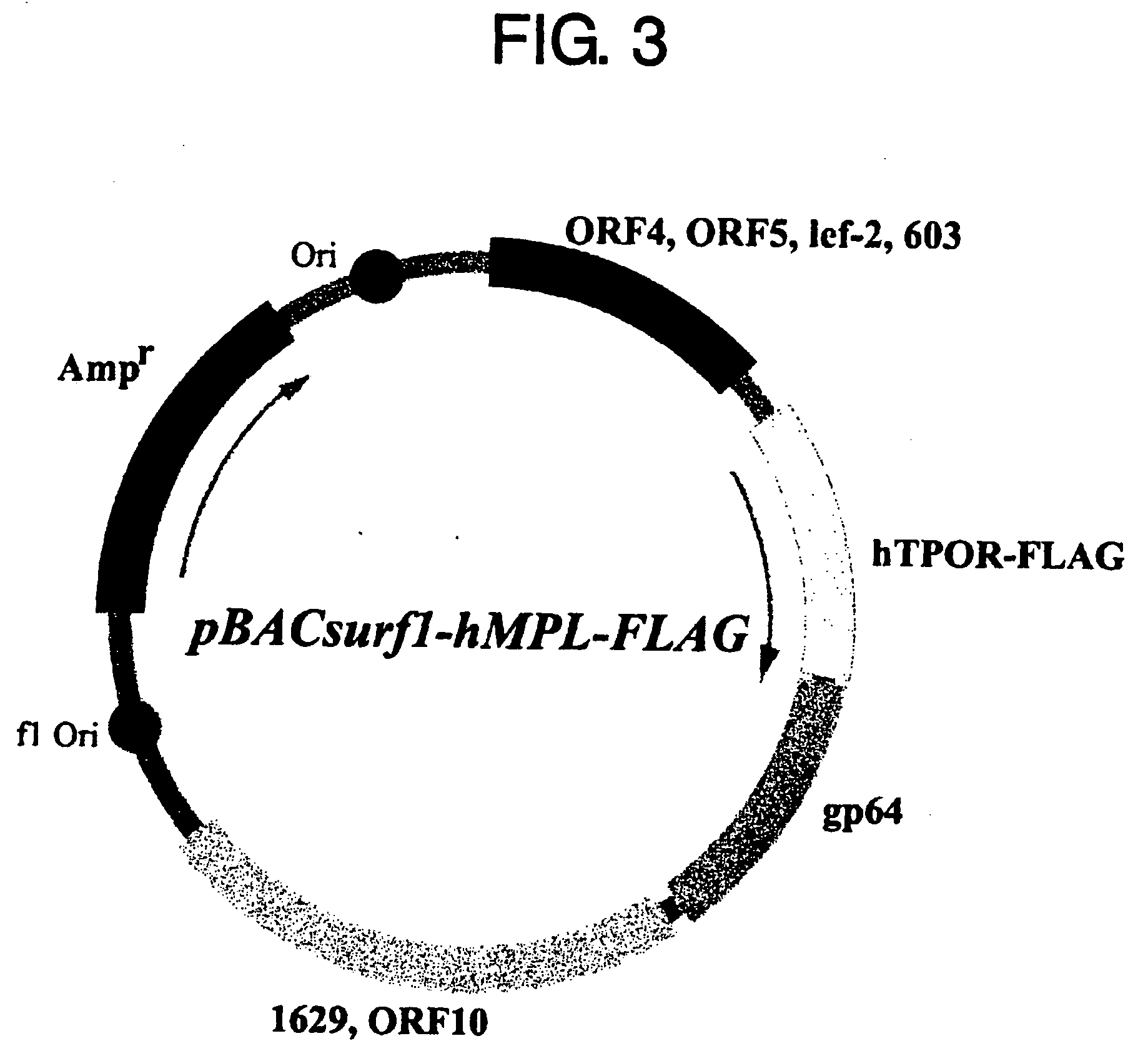Ligand having agonistic activity to mutated receptor
a technology of agonistic activity and receptor, which is applied in the direction of conversion screens, peptides, nuclear engineering, etc., can solve the problem that no fundamental therapeutic method has been availabl
- Summary
- Abstract
- Description
- Claims
- Application Information
AI Technical Summary
Benefits of technology
Problems solved by technology
Method used
Image
Examples
example 1
Establishment of a Ba / F3 Cell Line
[0120] Several reports have described CAMT patients carrying the G305C (R102P) mutation in their thrombopoietin receptor gene. In this context, an expression vector for the thrombopoietin receptor gene carrying the G305C (RI 02P) mutation was constructed and introduced into Ba / F3 cells by the method described below. The prepared DNA fragments were: the normal thrombopoietin receptor gene (SEQ ID NO: 1) and the mutant gene in which the C at nucleotide position 305 from the initiation codon has been substituted for G (SEQ ID NO: 3). These DNA fragments were digested with the restriction enzymes EcoRI and SalI, and introduced into the EcoRI-SalI site of the animal cell expression vector pCOS2-Ha to prepare pCOS2-hMPLfull (FIG. 1) and pCOS2-hMPLfullG305C (FIG. 2).
[0121] After the plasmids pCOS2-hMPLfull, pCOS2-hMPLfullG305C, and as a negative control pCOS2-Ha were treated with PvuI, 20 μg of each plasmid was transfected into Ba / F3 cells under the cond...
example 2
Preparation of the Extracellular Domain Protein of Thrombopoietin Receptor
[0122] To prepare the antigen for producing anti-thrombopoietin receptor antibodies, a system for producing and secreting the extracellular domain of human thrombopoietin receptor using the insect cell line Sf9 was constructed as described below. A gene construct comprising FLAG tag placed downstream of the extracellular domain of human thrombopoietin receptor (Gln26-Trp491) was prepared and inserted into the PstI-SmaI site of pBACsurf-1 (Novagen), to construct pBACsurf1-hMPL-FLAG (FIG. 3). The resulting gene construct (SEQ ID NO: 5) can secrete the extracellular domain of thrombopoietin receptor using a secretory signal sequence derived from baculovirus gp64 protein. 4 μg of the vector was transfected into Sf9 cells using Bac-N-Blue Transfection Kit (Invitrogen), according to the protocol attached to the kit. After three days of culture, the culture supernatants were collected and recombinant viruses were is...
example 3
Preparation of Anti-Thrombopoietin Receptor Diabody
[0123] MRL / lpr mice were immunized seven times with the purified protein of the TPOR extracellular domain. The first immunization was carried out using 100 μg of the protein, and subsequent immunizations were each performed using 50 μg of protein. The immunized cells were fused with P3-X63-Ag8-U1 (P3U1) cells by methods commonly used to prepare hybridomas. The hybridomas that produced anti-thrombopoietin receptor antibodies were selected by ELISA assay using the purified protein (VB08B, VB45B, VB033, VB140, and VB157).
[0124] Meanwhile, Balb / c mice were immunized a total of 11 times with hMPL-Ba / F3 cells at one-week to five-month intervals. 1.0×107 cells were intraperitoneally administered to the mice each time. Hybridomas were then prepared by the same method as described above. The hybridomas that produced anti-thrombopoietin receptor antibody were selected (TA136).
[0125] The cDNAs for the variable regions of the antibody H and ...
PUM
| Property | Measurement | Unit |
|---|---|---|
| pH | aaaaa | aaaaa |
| pH | aaaaa | aaaaa |
| concentration | aaaaa | aaaaa |
Abstract
Description
Claims
Application Information
 Login to View More
Login to View More - R&D
- Intellectual Property
- Life Sciences
- Materials
- Tech Scout
- Unparalleled Data Quality
- Higher Quality Content
- 60% Fewer Hallucinations
Browse by: Latest US Patents, China's latest patents, Technical Efficacy Thesaurus, Application Domain, Technology Topic, Popular Technical Reports.
© 2025 PatSnap. All rights reserved.Legal|Privacy policy|Modern Slavery Act Transparency Statement|Sitemap|About US| Contact US: help@patsnap.com



